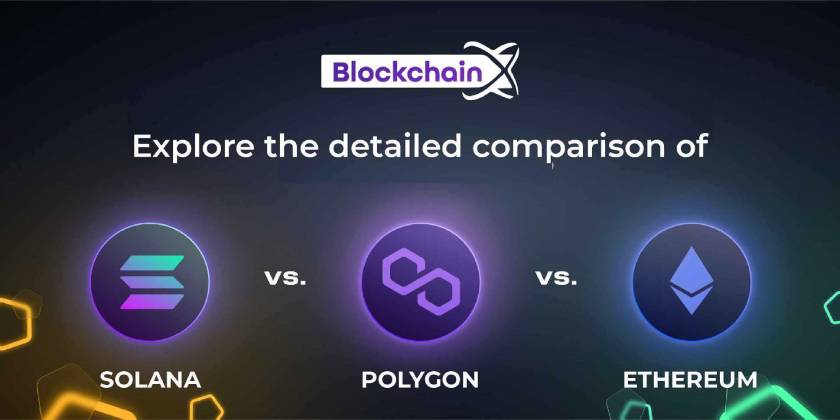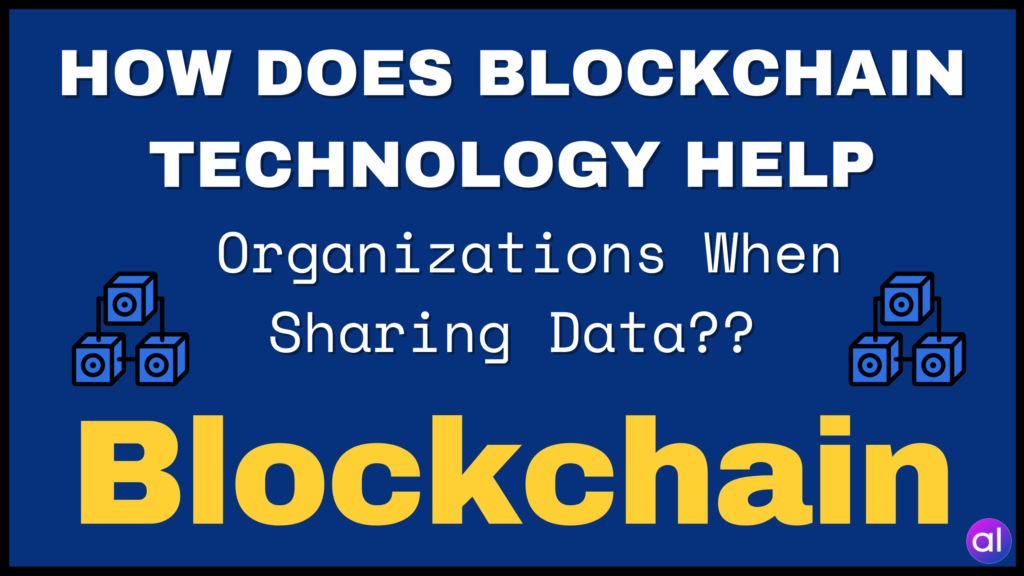
Blockchain and cryptocurrency have revolutionized the modern world in ways no one could have predicted a few years ago. The emergence of new business models based on blockchain technology has led to trends like NFTs and decentralized finance becoming the focal point of discussions. As the demand for blockchain-based solutions continues to rise, the need for advanced blockchain platforms like Solana, Polygon, and Ethereum has become more apparent.
The comparison between Solana, Polygon, and Ethereum has garnered significant attention as these platforms offer unique features and capabilities. While Ethereum remains a pioneer in the blockchain space, newer players like Solana and Polygon are challenging its dominance by providing faster and more cost-effective transactions.
This article delves into the differences between Solana, Polygon, and Ethereum based on various factors to help you choose the best platform for your specific needs. Whether it’s architecture, consensus mechanisms, scalability, or transaction speeds, each platform offers distinct advantages that cater to different requirements.
Why Focus on Solana vs. Polygon vs. Ethereum Comparison?
Before selecting a blockchain platform for your app development, it’s crucial to consider the value proposition each platform offers. While Ethereum boasts a diverse range of features and continuous development with Ethereum 2.0, competitors like Solana and Polygon are striving to outperform it in terms of transaction speeds and cost-effectiveness.
While Ethereum has been instrumental in popularizing blockchain applications like NFTs and smart contracts, Solana and Polygon are emerging as strong contenders with their unique strengths. Solana excels in transaction speeds and cost efficiency, while Polygon offers impressive scalability and interoperability. Ethereum, on the other hand, remains the go-to platform for decentralized applications due to its robust infrastructure.
This blog aims to highlight the key disparities between these three blockchain platforms and guide you in selecting the most suitable option based on your development needs.
Ethereum
Ethereum stands as the second most prominent blockchain platform after Bitcoin, providing essential resources for cryptocurrency transactions and decentralized app development. With its robust services and diverse applications, Ethereum has played a pivotal role in democratizing access to blockchain technology.
Notable Ethereum projects like Cryptokitty, Crypto Punks, and Decentraland have further solidified its position as a leading blockchain platform for creating innovative digital assets.
Solana
Solana has emerged as a highly scalable blockchain network designed to support user-centric applications with lightning-fast transaction speeds. With the ability to handle up to 65,000 transactions per second, Solana offers unparalleled efficiency for developers seeking high-performance solutions.
Projects like Degenerate App Academy and Solsea showcase the potential of Solana in driving innovation and scalability in the blockchain space.
Polygon
Formerly known as the Matic Network, Polygon serves as a blockchain Internet for Ethereum, facilitating multichain interoperability and enabling seamless access to new digital assets. With its emphasis on speed and scalability, Polygon has become a preferred choice for developers looking to build complex decentralized applications.
Notable projects like Easy Fi, QuickSwap, and ZED RUN underscore Polygon’s commitment to enhancing the Ethereum ecosystem through innovative solutions.
Differences Between Solana, Polygon, and Ethereum
| Criteria | Ethereum | Solana | Polygon |
|---|---|---|---|
| Native Token | ETH | SOL | MATIC |
| Year of Foundation | 2013 | 2017 | 2017 |
| Programming Language | Solidity | Rust, C, C++ | Golan, Solidity, Vyper |
| Transaction Speed | 13-15 per second | 50,000-65,000 per second | Up to 65,000 per second |
| Consensus Mechanism | Proof of Work | Proof of Stake, Proof of History | Proof of Stake, Plasma-based blockchain |
| Architecture | Stateful Architecture | Stateless Architecture | Multichain Architecture |
| Scalability | Limited Scalability | High-Performance Protocol for Scalability | Multi-chain Solutions for Better Scalability |
By understanding the nuances of these platforms and their unique features, developers can make informed decisions about which blockchain platform aligns best with their project requirements.
Consensus
Consensus mechanisms play a vital role in ensuring the integrity and security of a blockchain network. Ethereum relies on a Proof of Work (PoW) consensus, which requires significant computational power but offers robust security. In contrast, Solana leverages a hybrid consensus model combining PoW, PoS, and PoH to achieve blazing-fast transaction speeds.
Meanwhile, Polygon utilizes a PoS consensus mechanism to enable faster and more energy-efficient transactions, making it an attractive option for developers seeking scalability and speed.
Transaction Speed
Transaction speed is a critical factor for blockchain platforms, as it determines the efficiency and throughput of the network. Ethereum’s transaction speed is limited to 13-15 transactions per second, making it less suitable for high-volume applications.
In comparison, Solana and Polygon offer significantly higher transaction speeds, with Solana supporting up to 65,000 transactions per second and Polygon rivaling that speed with its innovative architecture.
Architecture
The architectural design of a blockchain platform impacts its performance and scalability. Ethereum’s stateful architecture records every transaction’s current state, ensuring data integrity but potentially limiting scalability.
In contrast, Solana’s stateless architecture and Polygon’s multichain approach offer enhanced scalability and efficiency by optimizing transaction processing and resource utilization.
Scalability
Scalability is a key consideration for developers looking to build applications that can handle increasing transaction volumes. While Ethereum faces scalability challenges due to its limited transaction speed, Solana and Polygon offer superior scalability through innovative consensus mechanisms and architecture.
By leveraging Solana or Polygon, developers can benefit from high-performance protocols that support rapid transaction processing and seamless scalability for diverse applications.
Famous Projects
Ethereum has been the launchpad for iconic projects like Cryptokitty, Crypto Punks, and Decentraland.
Solana has powered innovative projects such as Degenerate App Academy, Solpunks, and Solsea.
Polygon has enabled groundbreaking projects like Easy Fi, QuickSwap, and ZED RUN.
Conclusion
Choosing the right blockchain platform for your project requires careful consideration of factors like consensus mechanisms, transaction speeds, architecture, and scalability. While Ethereum remains a reliable choice for its security and feature-rich environment, Solana and Polygon offer compelling alternatives with their focus on affordability and speed.
Whether you prioritize security, performance, or cost-effectiveness, each platform has its unique strengths that cater to different development needs. By understanding the distinctions between Solana, Polygon, and Ethereum, developers can make informed decisions that align with their project goals and requirements.



